Review: Blu Vivo XI+
Aug 29, 2018, 9:00 AM by Eric M. Zeman
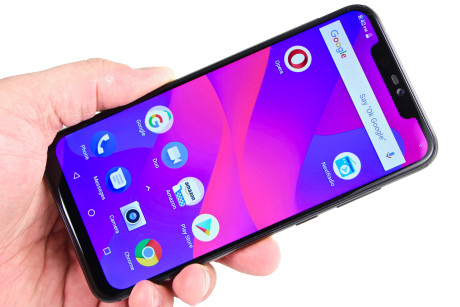
Blu's latest flagship is the Vivo XI+, a metal and glass phone that features a liquid design, a solid spec sheet, and Android Oreo. The phone has a notched 2:1 screen, dual cameras on the back, and an octa-core processor with 6 GB of RAM running the show. Here is Phone Scoop's in-depth review of the newest from Blu.
Hardware
Is It Your Type?
Blu says the Vivo XI+ is a new start for the company. It has a mid-range price point, but the solid spec sheet shows the XI+ aspires to be something more. If you're in the market for an unlocked Android phone, particularly one that supports two SIM cards, the Blu Vivo XI+ is an attractive option.
Body
Blu has changed course. Earlier this summer, we saw a brand new design in the Pure View. Now, that design language has come to Blu's flagship Vivo line. That means the XI+ swaps the metal-backed build of Blu's older phones for a sleek form that emulates today's top flagships.
The Blu Vivo XI+ looks like an all-glass device. The front is formed by curved Gorilla Glass 3. It's matched to a black painted aluminum frame. I like the rounded shape of the frame. The rear panel's shiny, curved look could be glass, but isn't. I didn't know it was plastic until I held the phone. The overall impression you get of the Vivo XI+ is one of class, sophistication, style. It comes in black and silver.
It's smooth all the way around, almost like a river rock. In fact, Blu calls this its liquid design. The corners are rounded nicely, the frame is gently rounded, and the rear panel is curved. These all contribute to the svelte profile.
The shape helps with daily usability. The Vivo XI+ is a big-ish phone. It's a hair over 6 inches tall and a hair under 3 inches wide. I was able to hold and use the phone comfortably, though you'll have to adjust your grip to reach the top of the screen with your thumb. It's mostly a two-handed phone and may be too big for some. I had no trouble dropping the phone into or retrieving it from jeans/shorts pockets. It's slippery, but not slippery enough that you need to worry about it skating out of your grip.
The build and materials are fine. The Gorilla Glass on front and metal frame around the sides are affixed to one another firmly with no gaps. I wish the rear panel were glass. The plastic is thick and glossy. I appreciate the smooth texture. The panel is tucked into the metal frame evenly.
The Gorilla Glass 3 is pure, uninterrupted black from top to bottom; there are no buttons or controls. The display itself vanishes into the face. The screen is notched, meaning there's a cutout at the top for the earpiece and user-facing camera. The shape and size of the notch exactly matches (apes?) that of the iPhone X. The side bezels are thin, the chin is minimal. It's the all-screen look that's in favor now.
Blu positioned the screen lock / power button on the right edge. It has a fine profile and a smooth texture. Travel and feedback are great. The volume toggle is above the screen lock button. It has the same texture and feedback as the screen lock button, but is about 3x longer to help differentiate the two. The SIM / memory card tray is perched high on the left edge. A SIM tool is need to eject it, and it requires some effort to extract. The tray supports either one SIM and one memory card, or two SIM cards. One SIM slot is nano-sized (4FF) and the other is micro-sized (3FF).
Side Buttons
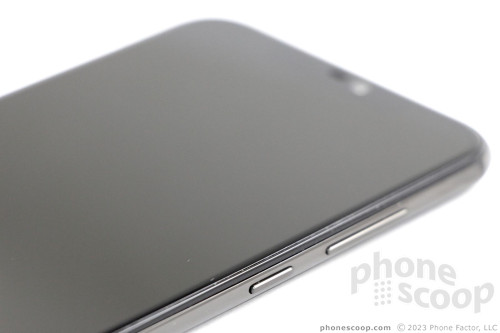
Apple, Google, and Motorola have taken heat for removing the 3.5mm headphone jack from their phones. For some reason, Blu thinks it has the market clout to do the same thing. This is an odd choice for a mid-range phone. At least Blu had the sense to include a 3.5mm adapter in the box, which plugs into the USB-C port on the bottom. Still.
Black Plastic
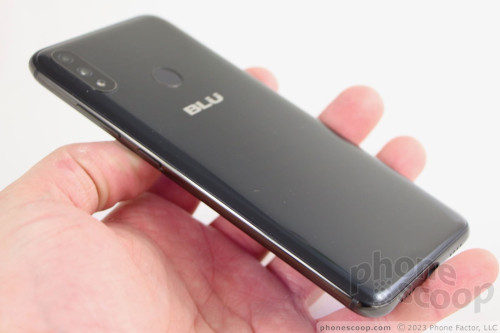
A fingerprint reader is carved into the plastic on back. It's pretty high up, but still easy to find and use. It's indented just a small bit and has its own glossy finish. The camera module, which strongly resembles the one of the iPhone X, is pushed into the top left corner of the rear panel. It features two lenses and an LED flash. The remainder of the rear is mirror-like. Too bad it's so easily smudged with fingerprints.
Camera Module
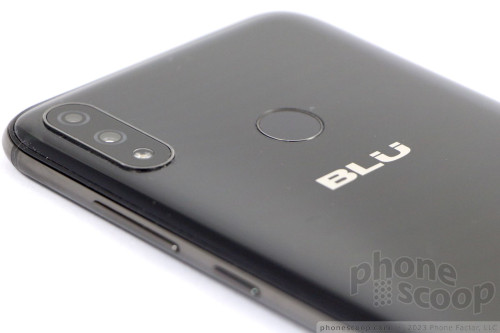
In all, the Vivo XI+ is another step in the right direction for Blu. It's not without fault, but most people can tote the phone with pride.
Screen
Blu is going for broke with the Vivo Xi+'s display. It measures 6.2 inches across the diagonal, which includes the notch area. The 19:9 aspect ratio boasts full HD+ resolution with 2,246 by 1,080 pixels for a pixel density of 402ppi. It's the best display I've seen on a Blu device. It's bright, colorful, and sharp. I was easily able to see the screen when outdoors under full sunlight. The colors pop off the screen. Text and on-screen graphics are as clean as could be. Viewing angles are quite good.
Notch
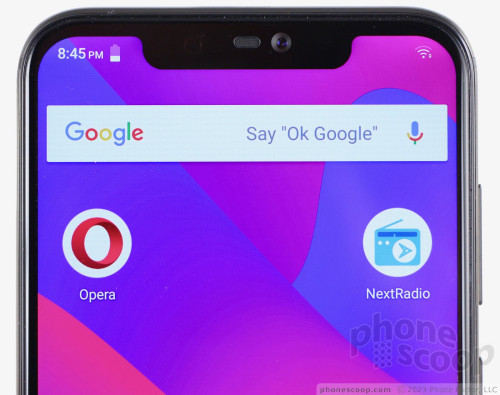
The XI+ includes all the display management tools found on more expensive flagships. You can alter the color tint, brightness, and night/reading filter. The phone also lets you adjust older apps to fill the 19:9 screen.
Signal
Blu is selling the Vivo XI+ unlocked from Amazon.com. It supports the basic LTE bands for use on AT&T/Cricket and T-Mobile/MetroPCS. It lacks the newest bands for AT&T (29/30) and T-Mobile (71). This means you may experience uneven service when the cell site is congested.
As for making calls, the Vivo XI+ managed to connect the majority on the first dial. Some required two dials. The phone also dropped one call on the highway. This puts call performance on par with other mid-range, unlocked phones I've tested on AT&T.
The phone features a Cat 6 modem, which permits maximum theoretical download speeds of 300 Mbps. The phone felt quick while performing everyday activities such as reading email, browsing Facebook, and surfing the web. So, too, was streaming audio and video content over LTE. The XI+ gave me no trouble with Spotify and YouTube.
Sound
The Vivo XI+ is an average voice phone. It didn't blow me away, but I wasn't disappointed either. Calls were generally free of distortion and the volume provided enough oomph so I was able to hear calls in semi-noisy spaces.
The speakerphone puts out plenty of air, as well, and provided for mostly clean conversations. I heard a small amount of distortion when the volume was set up all the way. During those times, I was able to hear calls in moving cars, in office spaces, and on city streets.
Ringers and alerts are definitely loud enough to grab your ear, and the vibrate motor can ensure it's felt in your pocket.
Battery
The Vivo XI+ has a surprising feature at this price point: wireless charging. Based on the Qi standard, the phone can power up when placed on compatible wireless chargers. I tested it on the new Samsung WIreless Charger Duo and it worked fine. It wasn't the most rapid charge-up I've seen, but this is something few mid-range phones offer.
The battery itself has a capacity of 3,050mAh. I found it was adequate to get me through a full day, though it was close to the danger zone at bedtime. With a full charge at 8am and thorough testing throughout the day, the Vivo XI+ had a reserve in the 20-25% range by the time I was calling it quits.
The phone and charger support 5V/2A charging. It's fairly quick to boost the battery by 25%, but takes close to 90 minutes to reach a full charge.
The phone can run in three different power modes: normal, optimized, and extreme. The latter of the three puts the phone into basic mode with only the most vital apps available.
Bluetooth, GPS, NFC, WiFi
Blu opted for Bluetooth 4.1 in the Vivo XI+. The radio did its job well. The phone paired with headphones, speakers, and my car without fuss. It maintained connections without dropping, and calls/music sounded good when pushed to Bluetooth accessories. Calls made in my car were above average in quality.
The GPS radio and Google Maps worked together flawlessly. The phone was able to pinpoint me in mere seconds with an accuracy as good as 20 feet. The Vivo XI+ ran smoothly during point-to-point navigation.
For a phone that packs in so many advanced features, I'm surprised there's no NFC on board.
A dual-band WiFi radio means the Vivo XI+ runs speedily on your home WiFi.
Software
Lock Screen
I wish Blu put a bit more effort into the lock screen. The Vivo XI+ does not include an active/ambient display feature. Nothing appears on the black screen at all. Notifications will cause the notification LED above the display to blink, but that is as far as Blu goes. Many other mid-range phones, such as those from Motorola, offer "active" displays that do more when the phone is idle.
Press the lock screen button to wake the display and view the time and notifications. The clock/date widget is rather small and crammed down against the bottom of the screen. It can be hard to see, depending on how you're holding the phone. Notifications fill up in the center of the screen. The only available shortcut takes you to the camera.
The fingerprint reader works very well. It was a breeze to train multiple prints, each of which was able to unlock the phone consistently and quickly. The reader is the quickest, most convenient way to unlock the phone.
The Vivo XI+ also includes what Blu calls Face ID. It uses a combination of tools to identify you, including infrared and iris detection. With this tool activated, the phone will wake when you raise it and, if it recognizes your mug, unlock automatically. The phone defaults to using the face scan, but if it can't recognize your face quickly enough it looks at your irises. It works fairly quickly, but can be a hair slower than the fingerprint reader. It's more secure than a simple picture ID would be. This can be convenient for when you don't want to use your finger to secure the phone.
Home Screens
Blu ships the Vivo XI+ with Android 8.1 Oreo, which I appreciate. The experience is mostly standard Android as designed by Google, but there are a few Blu flourishes throughout.
The home screen panels behave like the majority of Android devices. You can populate them with any arrangement of apps, shortcuts, actions, and widgets.
The app drawer, settings menu and Quick Settings / notification shade deliver a standard Android experience. They are dressed up with Blu's fonts and colors, but the functionality is the same.
You can change the font size, but not the size of icons. App icons and shortcuts look comically large on the home screens. You can, however, adjust the grid (4x5, 5x5, etc.) to add more content to the home screen if you want.
Blu added some gestures to the phone's user interface. First, owners can turn on a “glove mode” to ensure the screen works when wearing gloves. With this mode on, users can further choose to enable a handful of gestures that open various apps or function when drawing patterns.
Blu opted for a MediaTek Helio P20 processor with eight cores clocked at 2.0 GHz. This processor is a higher-end, mid-range chip (comparable to Snapdragon 600 series) that was first released in 2016. Blu is being generous with the memory and storage. The phone ships with 6 GB of RAM and either 64 GB or 128 GB of storage. I found the phone ran swiftly. The majority of apps opened in a blink, and screen transitions were liquid-like. The processor and memory combo deliver plenty of power to keep things humming along smoothly.
Camera
The quickest, most reliable way to open the camera is to double-press the screen lock button. It opens in under a second.
The main viewfinder is busy with features. A strip of basic toggles/controls lines the far left side of the screen, while the core shooting modes are listed next to the shutter buttons on the right side. Much like the iPhone and Galaxy camera apps, the main shooting modes are accessed by swiping the entire viewfinder one way or the other.
The main shooting modes include photo, video, night, backlight, face beauty, panorama, and group selfie. Then there are the ancillary shooting modes, accessed via a button on the left side of the viewfinder, which include time-lapse, slow motion, and professional.
The professional (AKA manual) mode allows you to adjust focus, shutter speed (up to 12 seconds), white balance, ISO, and exposure. These tools are easy to manage thanks to rotating dials that appear on the screen. I like that you can open all the dials at once.
The group selfie tool is sort of like a panorama. It requires you to take several pictures rather than just a single wide-angle shot. The software walks you through the process.
A standard set of filters is available if you want. A portrait function is also on board for taking shots with blurred backgrounds. I like that you can adjust the level of background blur before you take the picture. It's relatively easy to use, but still takes a little practice.
In all, the camera offers a lot of features, in an interface that I wish was slightly less crowded with toggles, buttons, and sliders. It runs quickly.
Photos/Video
The Vivo XI+ has two cameras on back and one on the front.
On the rear you'll find a 16-megapixel / 5-megapixel combo. The secondary sensor is there to help with contrast, exposure, focus, and the portrait effect. The bulk of photos I shot with the Vivo XI+ look very good. This phone isn't going to challenge the Galaxy Note9 or iPhone X, but it does a fine job considering the price point. Photos are in focus, properly exposed, and exhibit accurate white balance. I did notice a minor amount of grain on shots taken indoors, but nothing egregious. It really does quite well.
Photos taken with the advanced modes are serviceable. The portrait tool will really blur out the background to make your subject pop, but the line between subject and background is often fuzzy, at best.
The 16-megapixel selfie camera, which includes a screen-based flash, does a decent job, as well. I liked that it captured skin tones accurately, but I wish focus were sharper.
Both the front and rear cameras include a beauty effect tool. It lets you smooth out wrinkles and minimize moles and other blemishes. It's easy to turn yourself into a clown if you go too far.
On the video front, the Vivo XI+ captures the standard 1080p full HD at 30 frames per second. The results are in line with other phones at this price point, which is to say fine for the most part.
Wrap-Up
The new Blu is moving in the right direction. It trades in outdated designs for a more modern liquid look. The phone now matches similarly-priced phones with vital features such as an all-screen design, all-day battery life, and capable camera performance. The metal-and-glass hardware of the Vivo XI+ is the most attractive I've seen from Blu, even if the rear panel is still plastic.
When it comes to the basics, the 6.2-inch screen looks very good and the network connectivity is up to snuff. I can't complain about the 3,050 battery, and was pleased to discover wireless charging is on board. Toss in dual-SIM support and you have a flexible piece of hardware.
On the software side of things, Blu has chosen a relatively new version of Android and given it a not-annoying coat of paint. The biggest miss is the lack of an active display, but I'm glad the home screens and other functions are close to stock Android. The camera app may be overly complicated, but it has tons of features that let you flex your creative muscles. Moreover, the phone actually takes decent photos.
The standard price of this phone is $350. This puts it in a weird sport. There are gobs of good phones in the $150 - $250 space, and more in the $450 - $500 space. Not too many phones have a price point in the vicinity of $350. As good as the Blu Vivo XI+ is, it is hard to recommend when the LG Stylo 4 and Moto G6 are available for less. In this case, the differentiator would be support for two SIM cards and wireless charging, something Motorola and LG don't offer. If you can snag it for the initial $250 sale price, I say viva la Vivo!
Notch

Comments
(continues)













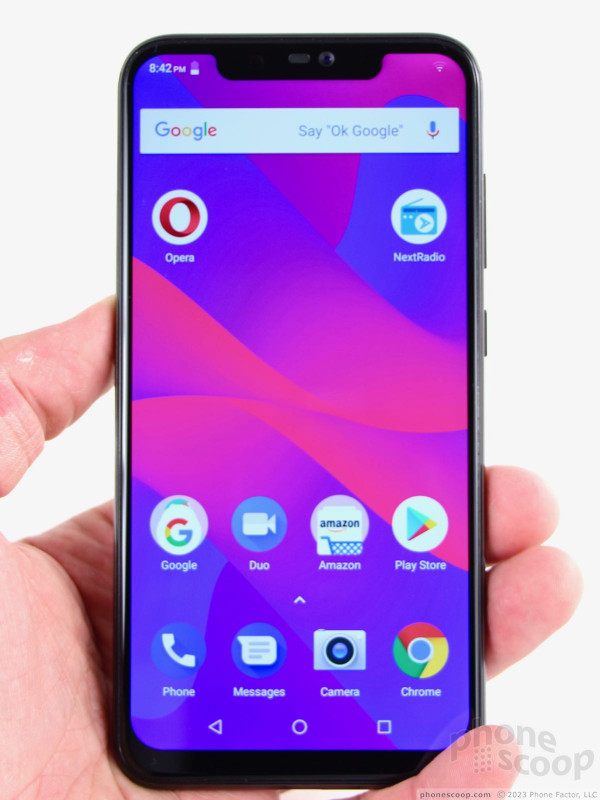










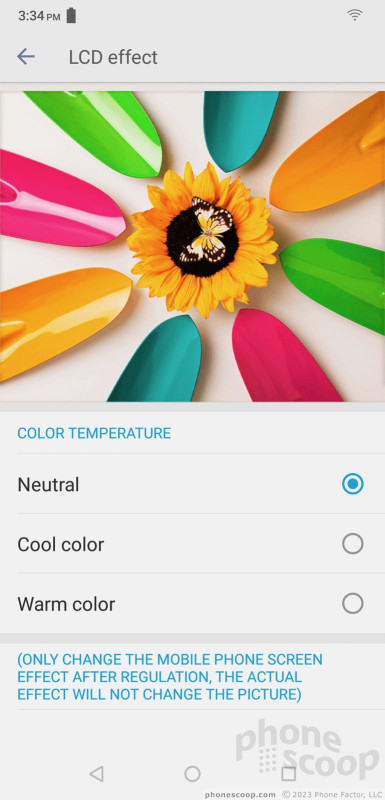




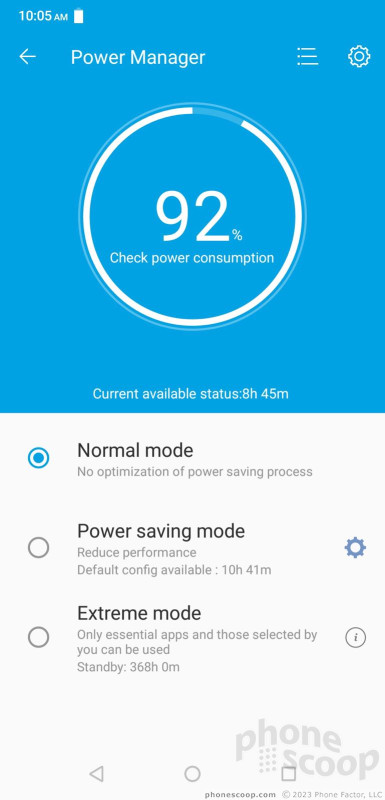




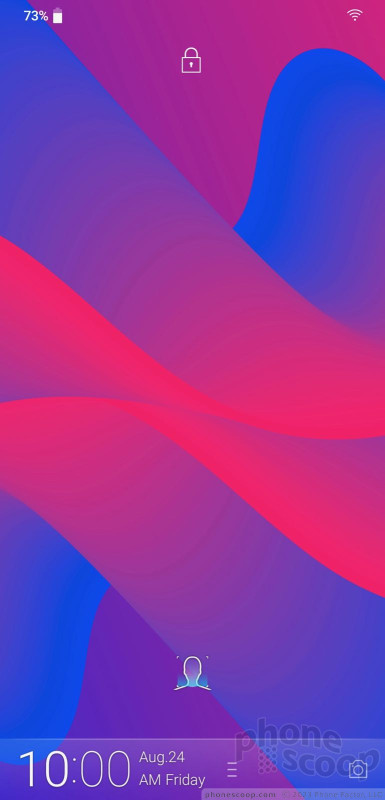













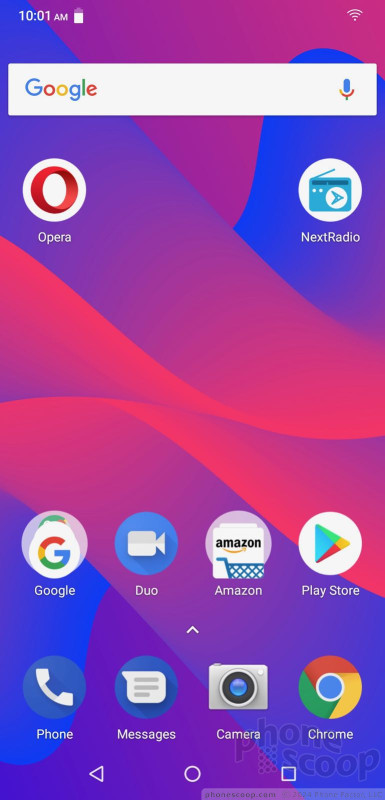










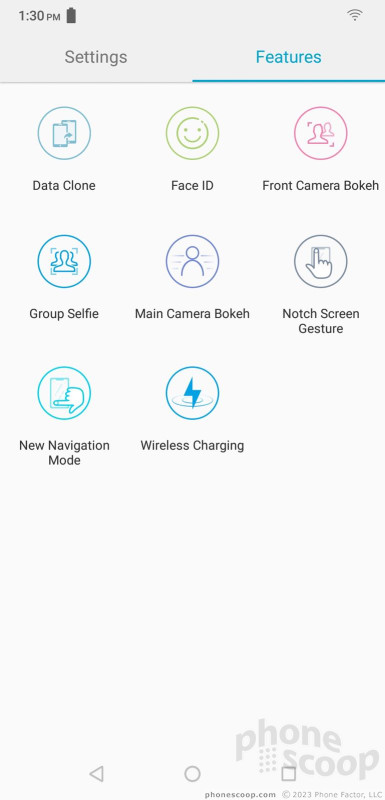










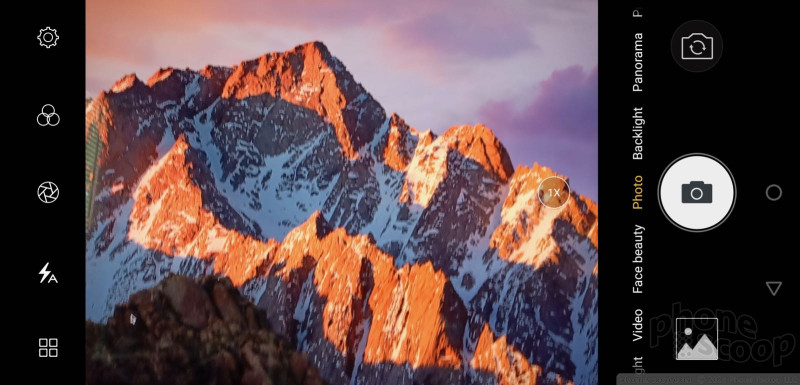







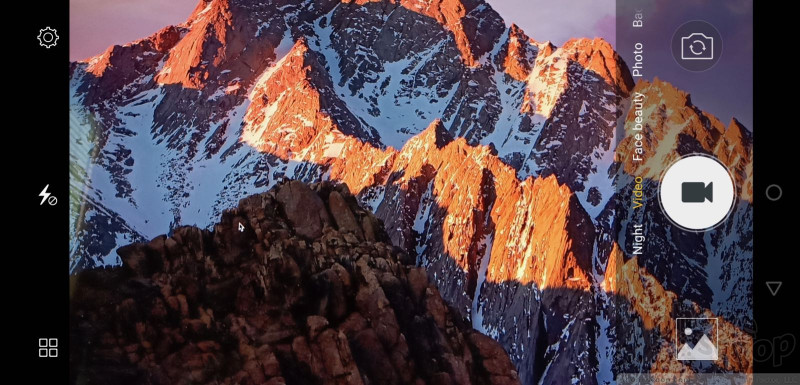




















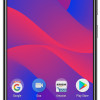 Blu Debuts Vivo XI+ Flagship with Liquid Design
Blu Debuts Vivo XI+ Flagship with Liquid Design
 iPhone 15 Series Goes All-In on USB-C and Dynamic Island
iPhone 15 Series Goes All-In on USB-C and Dynamic Island
 Samsung Puts its Best Camera Yet in the Galaxy S23 Ultra
Samsung Puts its Best Camera Yet in the Galaxy S23 Ultra
 BLU Vivo XI+
BLU Vivo XI+









